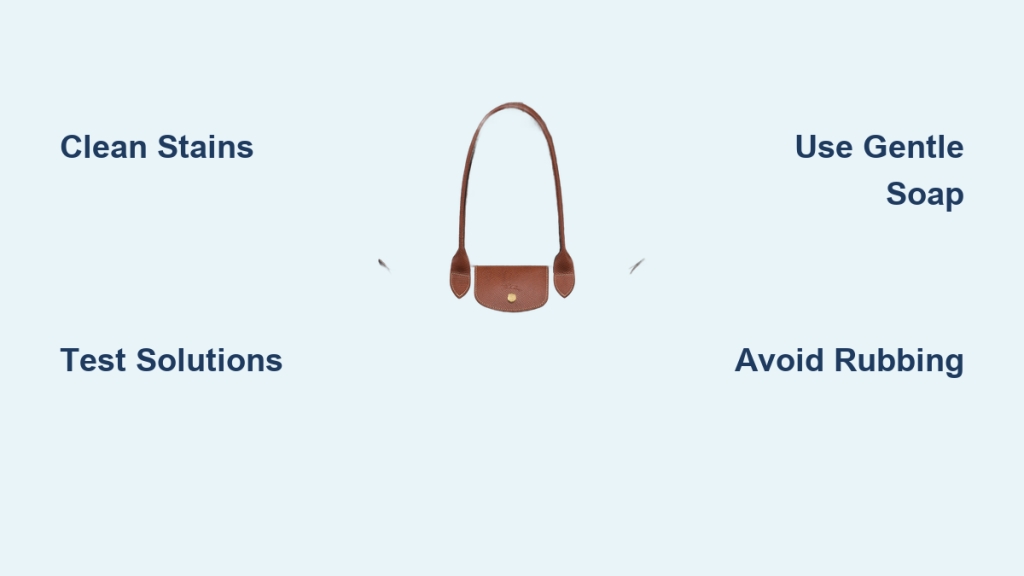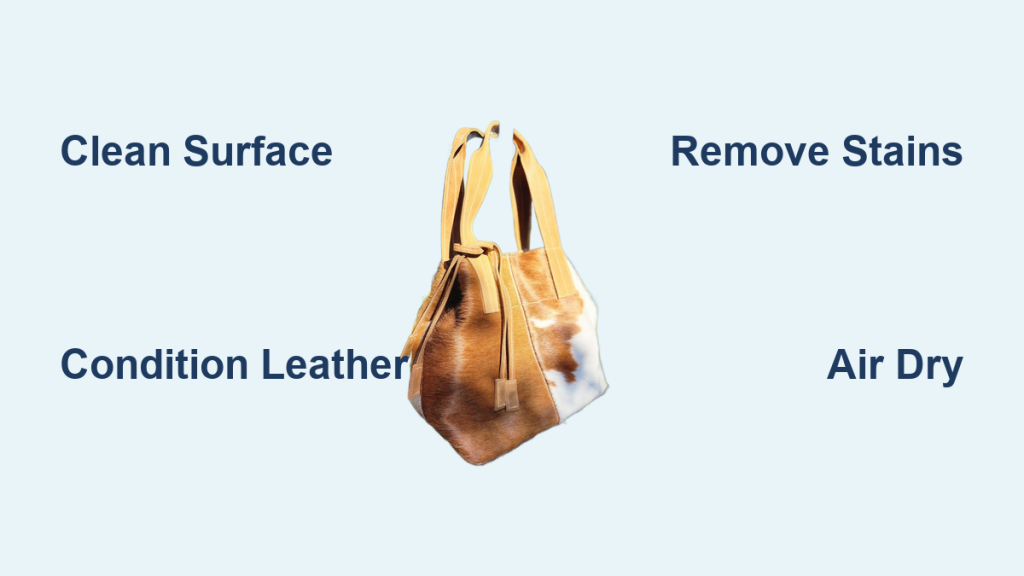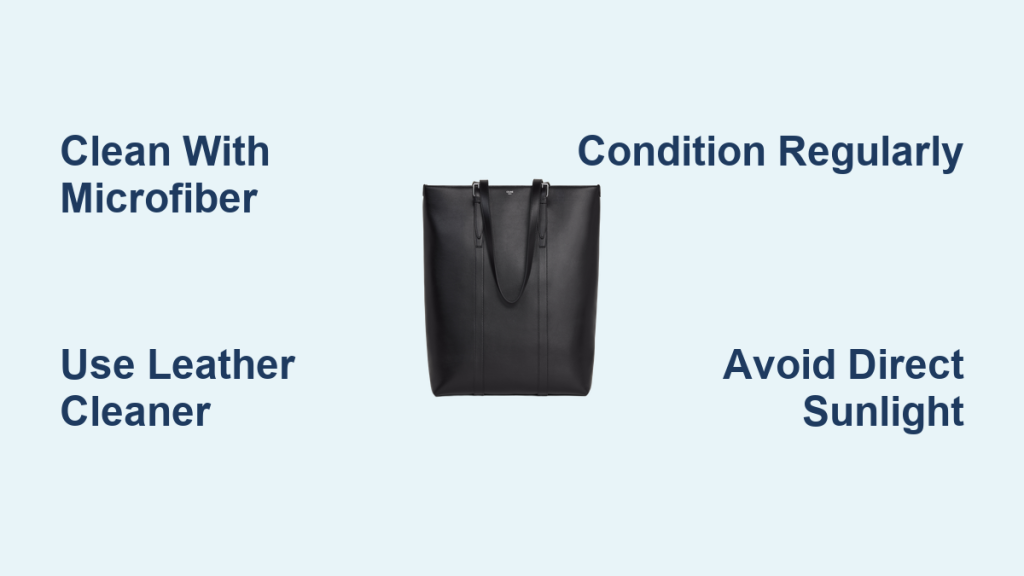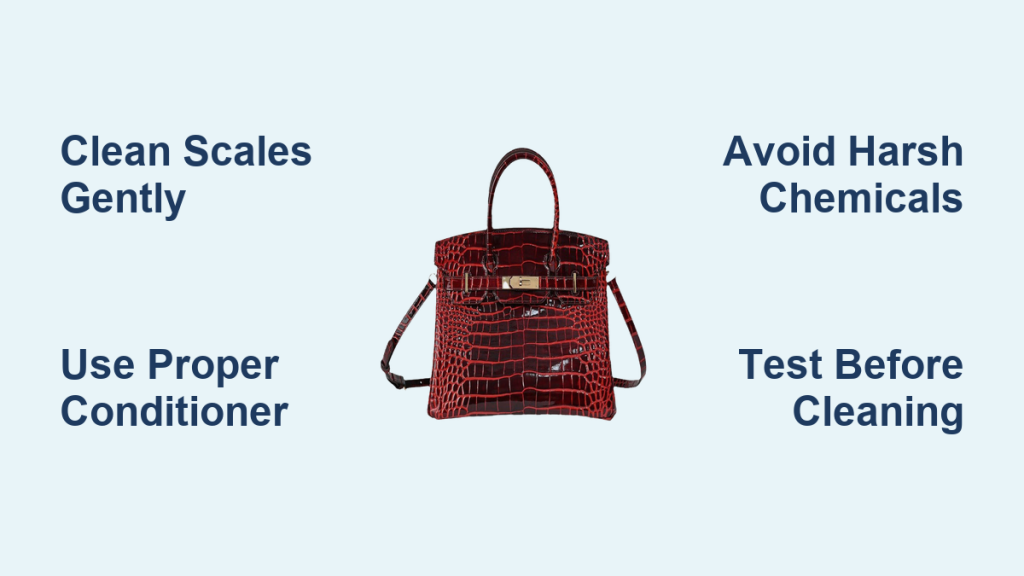Are you heartbroken to find a stain on your beloved Longchamp bag? It’s a frustrating experience – these bags are an investment, and keeping them pristine feels essential. Luckily, most stains can be removed with the right approach. A quick fix often involves gentle soap and water, but tackling different stain types requires a more nuanced strategy.
This comprehensive guide will walk you through everything you need to know to clean stains off your Longchamp bag, regardless of the material (nylon, leather, or canvas). We’ll cover identifying the stain, gathering the right supplies, step-by-step cleaning methods for various blemishes, and preventative measures to keep your bag looking its best for years to come. By the end of this article, you’ll feel confident in your ability to restore your Longchamp’s beauty.
Identifying Your Longchamp Material & Stain Type
Before you begin, knowing your bag’s material is crucial. Longchamp bags primarily come in three materials:
- Nylon Canvas (Le Pliage): The most common material, known for its durability and water resistance.
- Leather: Often found on handles, trim, and some limited-edition bags. Requires specialized care.
- Suede/Embossed Leather: More delicate and prone to damage.
Identifying the stain is equally important:
- Water-based stains: Coffee, tea, juice, soda, water spots.
- Oil-based stains: Grease, makeup, lotion.
- Ink stains: Pen, marker.
- Dirt & Grime: General wear and tear.
What You’ll Need for Stain Removal
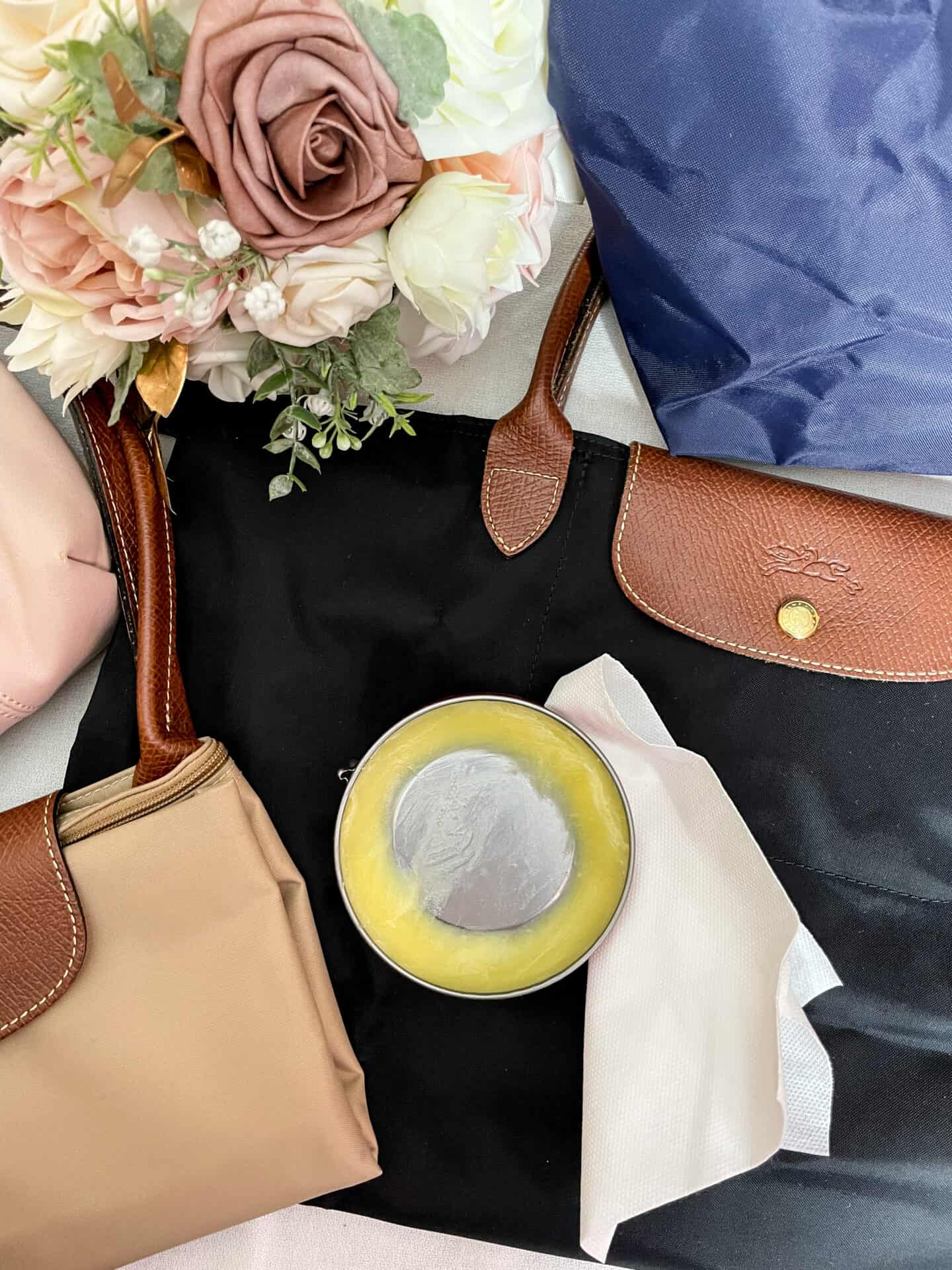
| Item | Quantity | Specifications |
|---|---|---|
| Mild Dish Soap | 1 tbsp | Dye-free, fragrance-free |
| Distilled Water | 1 cup | Avoids mineral deposits |
| Soft Microfiber Cloths | 3-5 | Lint-free, colorfast |
| Leather Cleaner | 1 bottle | Specifically for leather (if applicable) |
| Leather Conditioner | 1 bottle | To restore moisture to leather (if applicable) |
| Magic Eraser | 1 | For stubborn marks on nylon (use cautiously) |
| Rubbing Alcohol | Small amt | For ink stains (test in inconspicuous area) |
| Soft-bristled Brush | 1 | Old toothbrush works well |
| Saddle Soap | 1 bar | For heavily soiled leather |
Cleaning Nylon Canvas Longchamp Bags
Most Common Causes of Stains on Nylon Canvas
- Water Spots: From rain or spills, leaving unsightly marks.
- Food & Drink Spills: Coffee, juice, and other beverages.
- Dirt & Grime: Accumulation from daily use.
- Ink Transfer: From pens or markers in your bag.
Method 1: Gentle Soap & Water (For Most Stains)
- Diagnosing the Issue: Identify the type of stain. If it’s fresh, act quickly.
- Fix Steps:
- Mix 1 tablespoon of mild dish soap with 1 cup of distilled water.
- Dampen a microfiber cloth with the solution (do not saturate).
- Gently blot the stain, working from the outside in to prevent spreading.
- Rinse a clean microfiber cloth with distilled water and blot the area to remove soap residue.
- Air dry the bag away from direct sunlight or heat.
- Testing: Before applying to the entire stain, test the solution on an inconspicuous area (like the bottom corner) to ensure it doesn’t discolor the fabric.
Method 2: Magic Eraser (For Stubborn Marks)
- Diagnosing the Issue: Use for scuff marks or stubborn dirt that won’t budge with soap and water.
- Fix Steps:
- Lightly dampen a Magic Eraser. Do not scrub aggressively, as it can damage the nylon.
- Gently rub the affected area in a circular motion.
- Wipe away any residue with a damp microfiber cloth.
- Testing: Always test the Magic Eraser in an inconspicuous area first, as it can sometimes remove color.
Method 3: Rubbing Alcohol (For Ink Stains)
- Diagnosing the Issue: Targeted for ink stains only.
- Fix Steps:
- Dampen a cotton swab with rubbing alcohol.
- Gently dab the ink stain, working from the outside in.
- Blot with a clean microfiber cloth. Repeat as needed.
- Rinse with distilled water and air dry.
- Testing: Test the alcohol on a hidden area first, as it can potentially discolor the nylon.
Cleaning Leather Longchamp Bags
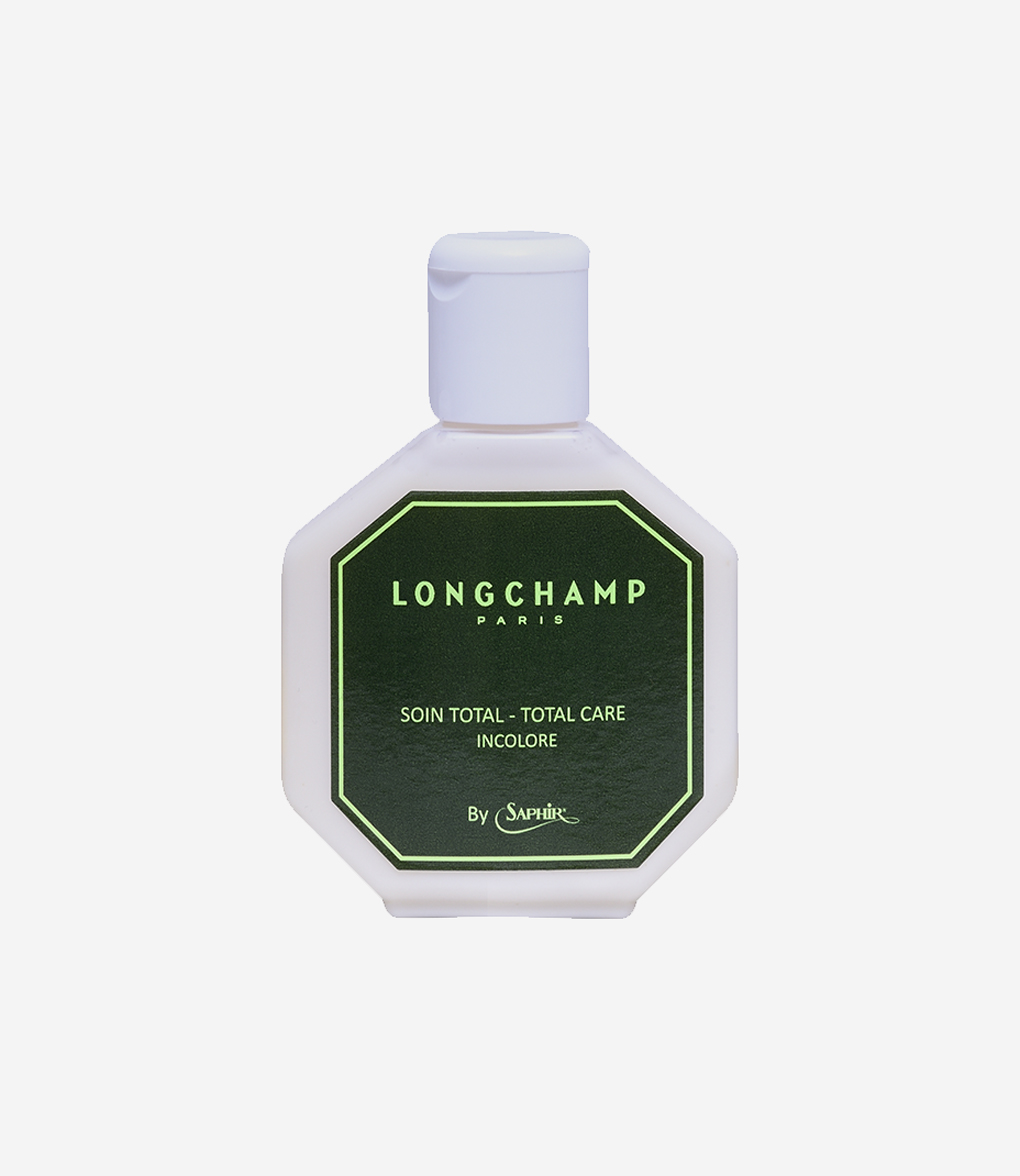
Why Leather Requires Special Care
Leather is a natural material that can be damaged by harsh chemicals and excessive moisture. Proper cleaning and conditioning are essential to maintain its suppleness and prevent cracking.
Method 1: Leather Cleaner & Conditioner
- Diagnosing the Issue: Ideal for general cleaning and removing light dirt or grime.
- Fix Steps:
- Apply a small amount of leather cleaner to a microfiber cloth.
- Gently wipe the leather surface, using circular motions.
- Remove excess cleaner with a clean, damp cloth.
- Allow the leather to dry completely.
- Apply a leather conditioner to restore moisture and prevent cracking.
- Testing: Test the cleaner and conditioner on an inconspicuous area first.
Method 2: Saddle Soap (For Heavily Soiled Leather)
- Diagnosing the Issue: For deep cleaning of heavily soiled leather.
- Fix Steps:
- Dampen a sponge with lukewarm water.
- Rub the sponge over the saddle soap to create a lather.
- Apply the lather to the leather, using circular motions.
- Wipe away the lather with a clean, damp cloth.
- Allow the leather to dry completely and follow with a leather conditioner.
Prevention Tips and Maintenance Advice
- Regular Cleaning: Wipe down your Longchamp bag with a damp microfiber cloth weekly to prevent dirt buildup.
- Waterproofing Spray: Apply a leather or fabric protector spray to help repel water and stains (follow product instructions).
- Storage: Store your bag in a dust bag when not in use to protect it from dust and sunlight.
- Avoid Overfilling: Overfilling can stretch and distort the bag’s shape.
- Address Stains Immediately: The faster you address a stain, the easier it will be to remove.
Pro Tips
- Don’t Use Harsh Chemicals: Avoid bleach, ammonia, and abrasive cleaners, as they can damage the material.
- Blot, Don’t Rub: Rubbing can spread the stain and damage the fabric.
- Air Dry Only: Never use a hairdryer or direct heat to dry your bag.
- Condition Leather Regularly: This prevents cracking and keeps the leather supple.
- Invest in a good quality leather protector spray.
- For persistent ink stains, consider professional cleaning.
Professional Help
- Signs You Need a Pro: Stubborn stains, extensive damage, or if you’re unsure about cleaning the bag yourself.
- What to Look For: Leather cleaning specialists with experience in designer handbags.
- Typical Cost Ranges: $50 – $200+ depending on the extent of the cleaning required.
- Warranty Considerations: Check your Longchamp warranty to see if professional cleaning is covered.
FAQ
Q: Can I use baby wipes to clean my Longchamp bag?
A: While baby wipes can work for very light cleaning, they often contain chemicals that can leave a residue. It’s best to stick with mild soap and water or a dedicated leather cleaner.
Q: How do I remove a grease stain from my nylon Longchamp?
A: Sprinkle cornstarch or baking soda on the stain to absorb the grease. Let it sit for a few hours, then brush off. Repeat if necessary.
Q: Is it safe to machine wash my Longchamp Le Pliage?
A: While some people have had success machine washing their Le Pliage, it’s generally not recommended as it can damage the bag’s shape and color. Hand washing is always the safer option.
Alternative Solutions
- Professional Leather Restoration: For severely damaged leather, a professional restoration service can repair cracks, re-dye faded areas, and restore the leather’s original appearance.
- Specialized Stain Removers: For specific stains (like ink or oil), there are specialized stain removers available. Always test in an inconspicuous area first.
Get Your Longchamp Working Again
By following these steps, you can effectively remove stains from your Longchamp bag and keep it looking beautiful for years to come. Remember to identify the material and stain type, test cleaning solutions in an inconspicuous area, and always handle your bag with care.
Have you successfully removed a stain from your Longchamp bag? Share your tips and experiences in the comments below to help other readers!

